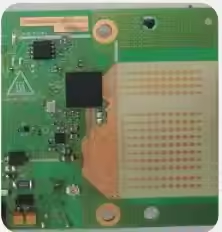millimeterwave communication chips
Millimeterwave communication chips represent a breakthrough in wireless technology, operating in the frequency range of 30-300 GHz. These sophisticated integrated circuits serve as the cornerstone of high-speed wireless communication systems, enabling unprecedented data transmission rates and network capacity. The chips incorporate advanced signal processing capabilities, beamforming technology, and robust error correction mechanisms to ensure reliable communication in challenging environments. At their core, these chips feature multiple transceivers, phase arrays, and power amplifiers working in harmony to process and transmit data at extremely high frequencies. The technology enables multi-gigabit data rates, making it ideal for 5G networks, high-speed wireless backhaul, and emerging applications in autonomous vehicles. The chips' architecture is specifically designed to handle the unique challenges of millimeter-wave propagation, including atmospheric absorption and limited range, through sophisticated signal processing algorithms and adaptive beamforming techniques. In practical applications, these chips find extensive use in cellular base stations, small cell deployments, fixed wireless access systems, and high-bandwidth consumer devices, providing the foundation for next-generation wireless communications infrastructure.


